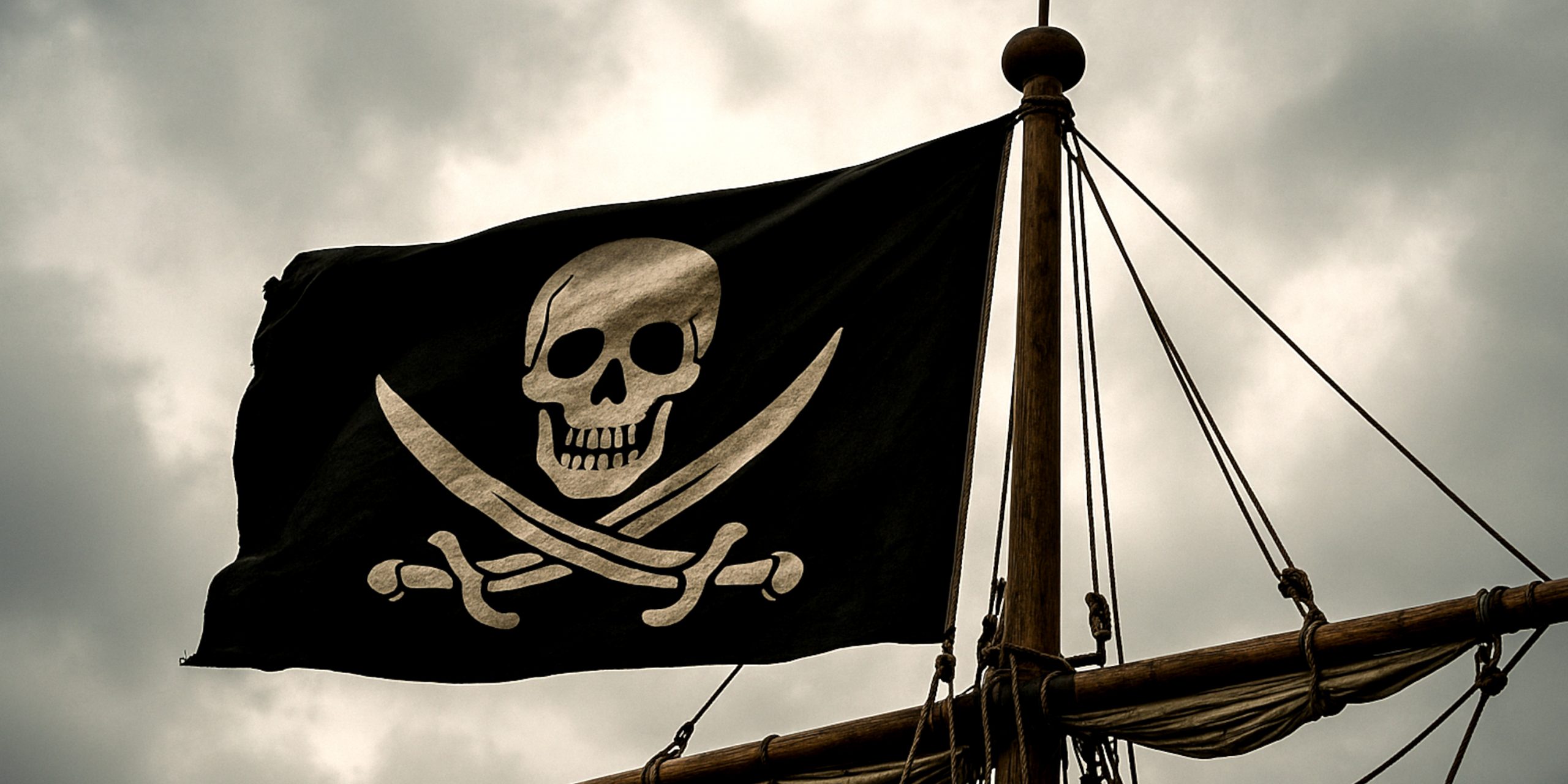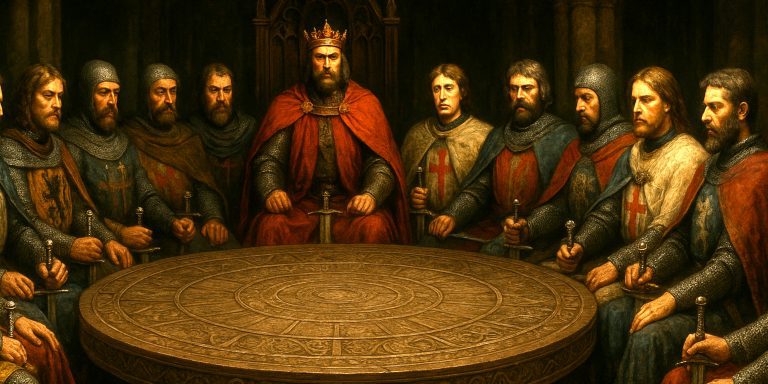
What Is a Pirate Flag?
Pirate flags were not just decorative pieces of cloth fluttering from a mast. They were symbols designed to inspire fear, intimidate victims into surrendering without a fight, and declare a pirate’s identity. The most famous of these is the Jolly Roger, often shown as a skull and crossbones on a black background, but this was only one of many variants used during the Golden Age of Piracy.
We will explore what these flags meant, how they varied between crews, and what they tell us about piracy on the high seas.
The Purpose of Pirate Flags
Pirate flags were intended to send a clear message before a shot was even fired. If a ship spotted a known pirate symbol, its captain might choose to surrender rather than face the likely bloodshed. These flags were part of a pirate’s psychological arsenal.
Pirates used flags tactically. Many would sail under false colours until the last moment, raising their true banner only when the victim had no chance of escape. The sudden appearance of a dreaded flag was often enough to end a skirmish before it began.
Common Symbols and Their Meanings
Pirate flags often featured simple but menacing iconography, chosen for maximum visual impact from a distance.
- Skull and Crossbones: The classic “Jolly Roger” image, widely understood to signify death.
- Hourglass: A warning that time was running out, either for surrender or life.
- Spear, Sword or Cutlass: Signified violent intent and readiness for battle.
- Skeletons or Devils: Associated with death, the supernatural and torment.
- Hearts and Drops of Blood: Emphasised cruelty, pain, or the fate of those who resisted.
- Bleeding Hearts: Found on flags like that of Bartholomew Roberts, symbolising mercy denied.
These symbols were often white on a black or red background, chosen for contrast and clarity.
Black Flags vs Red Flags
While black flags symbolised piracy in general, red flags had a more specific and terrifying connotation. A red flag, sometimes called “no quarter”, meant no mercy would be given. Surrender was not an option. If raised, it was a sign that the pirates intended to kill everyone aboard the target ship.
Notable Pirate Flags
Edward Teach (Blackbeard)
Blackbeard’s flag showed a skeleton holding an hourglass and a spear, with a bleeding heart beside it. It conveyed both menace and a sense of fatal urgency.

Bartholomew Roberts
Roberts had multiple flags. One showed him holding a sword while standing on two skulls marked “ABH” and “AMH” (A Barbadian’s Head and A Martinican’s Head), referencing his enemies. Another depicted Death and Roberts holding an hourglass together.
Calico Jack Rackham
His flag, perhaps the most recognisable today, featured a skull above two crossed cutlasses. It suggested violence and aggression in a clean, bold design.

Emmanuel Wynn
A French pirate believed to be among the first to fly the skull-and-crossbones motif, with an hourglass alongside it. His design may have influenced later pirate standards.
Origins of the Jolly Roger
The term “Jolly Roger” has uncertain origins. Some theories suggest it comes from the French joli rouge (“pretty red”), referring to the red “no quarter” flag. Others trace it to older nautical slang or religious references.
Whatever the origin, by the early 18th century, the term was widely understood to refer to the black flag flown by pirates.
Pirate Flag Myths
Many popular images of pirate flags today are modern inventions or simplifications. Few historical flags have survived, and much of what is known comes from eyewitness accounts, logbooks, and trial records.
Not every pirate had a custom flag. Some used plain black or red banners without symbols. Others simply reused known designs to spread fear more effectively.
The Seven Swords takeaway: The Flag as a Weapon
A pirate flag wast a calculated piece of visual warfare designed to communicate terror and intent. Though varied in design, the message was often the same: surrender quickly, or suffer the consequences. In a world where combat at sea was brutal and often fatal, the flag could be the most effective weapon a pirate had.
If you’re exploring the history of piracy or planning a visit to a maritime museum, look closely at these banners. They’re relics not just of the sea, but of strategy, identity, and survival.
Watch the documentary:



